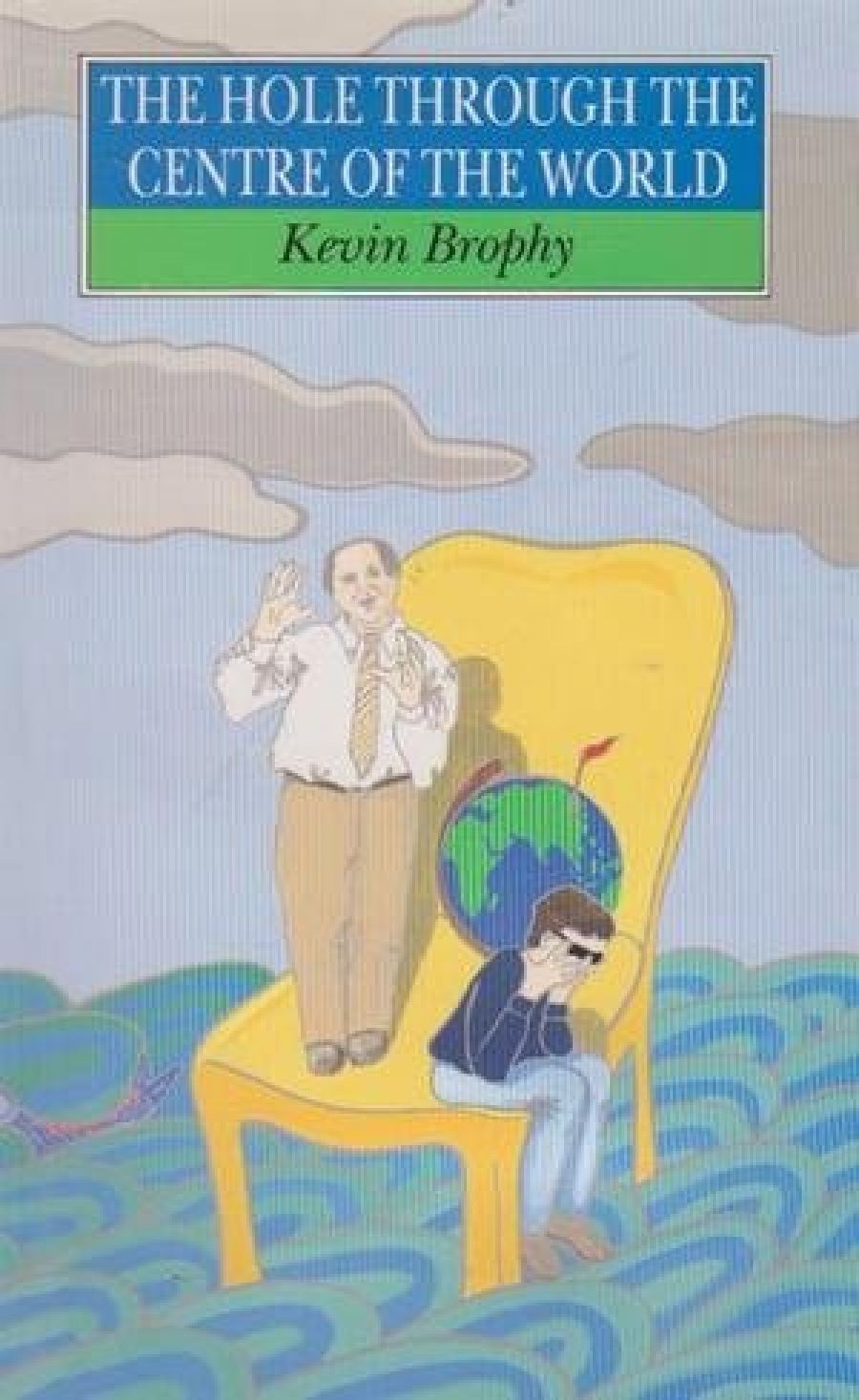
- Free Article: No
- Contents Category: Fiction
- Review Article: Yes
- Online Only: No
- Custom Highlight Text:
Current events in the Gulf suggests that the political lessons of this century notwithstanding the unbelievers of the West still have faith in the efficacy of the short sharp shock administered by a hi-tech war. Religion sustains one side, Science the other and God of course, as always, is on both.
- Book 1 Title: The Hole Through the Centre of the World
- Book 1 Biblio: New Endeavour Press/Simon & Schuster, 202 pp, $16.95 pb
I read The Hole through the Centre of the World and wrote this review to the accompaniment of a barrage of disinformation coming from the media, and Kevin Brophy’s novel seemed at times an uncanny anticipation of the rhetoric that was being served up by military analysts – at least in the early stage of hostilities before even they had to acknowledge that despite the West’s technological superiority there would be no quick and easy answer to the ‘problem’ of the Middle East.
Erno Gaasland is a chair salesman whose passion is science. His sales figures are good because he believes in his products and can convince potential customers that they are buying the ideal chair, the Perfect Chair, the chair brought to the acme of comfort by computer design. Science is his salvation, providing him with a living and something to live for, and he believes it will save the whole world: ‘For Erno there were no mysteries or secrets in the universe, only undiscovered scientific laws.’
Unlike his Perfect Chairs, Erno’s family cannot be moulded into an ideal shape. The narrative centres on his son Martin, whose emotional development seems permanently stultified as the result of a childhood tragedy. Because of Martin’s negligence, his younger brother Daniel, his father’s favourite, is killed in an accident. Martin drifts aimlessly through life, unable to forgive himself, unable to resolve his affair with a friend’s fiancée, unable to form a satisfactory tie with either of his estranged parents.
Erno’s boundless enthusiasm for ACRO, the company that employs him, takes him to a restricted area of its plant where, unsuspected by him, nuclear waste is stored. He goes there to worship at the clean white shrine of science – and it ends up killing him. But even as Erno’s body deteriorates he retains his faith in progress, scorning the demonstrators camped outside ACRO’s gates and refusing to admit that there is anything wrong with him: ‘The yellow and white markings on his arms were like a religious decoration from another civilisation.’
As that simile suggests, there is much deft writing in this book. Brophy has a gift for figuration, the ability to see one thing and think another that produces vivid, sharply imaged prose. Consider this summary of Erno and Martin’s drear domesticity:
The sun got itself up in the mornings, and fell on its back behind the suburb’s roofs at the finish: this seemed to be all that was necessary. […] The television went on and on like someone in the corner remembering aloud everything that had happened in a lifetime.
Despite such sequined patches, however, the fabric of Brophy’s narrative seems to wear thin as the novel unfolds. The biggest stumbling block to maintaining a reader’s interest is Brophy’s handling of character, for although much of the narrative is told from his point of view, Martin remains decidedly lifeless. Presumably Brophy wanted to draw the portrait of a defeated, colourless man; he succeeds rather too well.
Erno, whose aspirations and enthusiasms are the butt of everyone’s satire, including the narrator’s, is a much more animated creation. Larger than life he bounds off the page and inspires far more sympathy than the wimpish Martin. At first Martin’s affair with Sandra, with its attendant emotional complications, seems to promise a complex array of narrative paths down which to go exploring; unfortunately, rather like the affair itself, these peter out into dead ends.
Brophy also only skirts around another potentially interesting character, Val, Martin’s mother. He writes of her as a young girl, sketching in the background to her marriage, but devotes little attention to her life after she leaves her husband. Val ends up an ardent peace activist, but the reader doesn’t have a clear sense of what brings her to this commitment. It is another instance in which Brophy tells too little – or too much, depending on which way you look at it.
The thread that holds this novel together is Brophy’s interrogation of belief systems: not just Erno’s fetishisation of science, but also the simple-minded rhetoric of Val’s peace group:
[Martin] could not believe that ACRO was simply evil, and that it was about to destroy the lives of innocent people. He could not believe in the innocence of people. Who, after all, had created ACRO? […] Who could be sure of knowing the difference between innocence and evil?
Both Saddam Hussein and George Bush Jr are sure that they know. So far neither the Iraqi’s faith nor their enemy’s ‘high precision surgical’ bombing can protect the civilians of Baghdad. Religion and Science seem equally at a loss, and God of course, as always, is politely declining to comment.


Comments powered by CComment